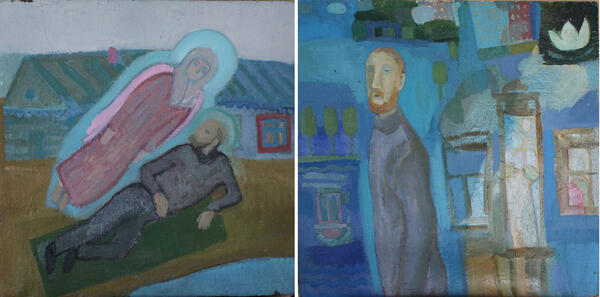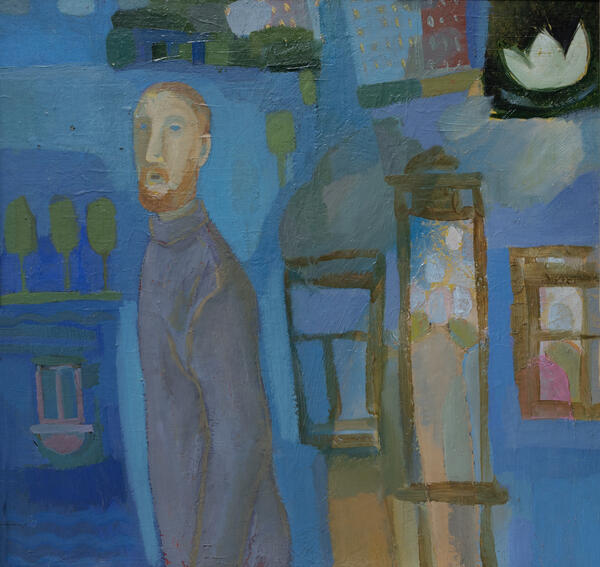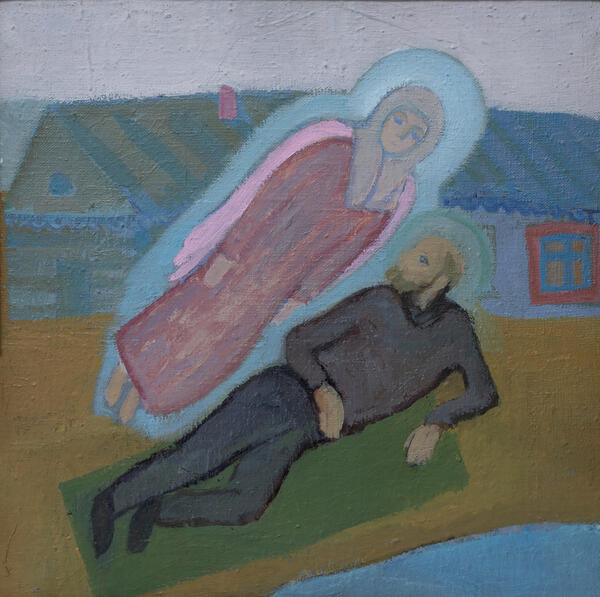Lyudmila Nikolaevna Makarenkova was one of the young Kostroma artists, who graduated from the Art and Graphic Faculty of the Nekrasov Kostroma State Pedagogical Institute in the 1970s. Some of them formed into a group of like-minded individuals, who believed that art should not copy reality, and proclaimed a new way of creating images that was in stark contrast to old conservative and academic ways.
They stated that their aesthetic practice will develop towards the synthesis of color, sound, movement, time and space. They believed that attempts to compete with nature — bureaucratic realism — have become obsolete and should be replaced by a new reality based on individual perception, emotional self-expression and constructive thought.
For these artists, this new reality was valuable in itself. Their goal was to develop their own unique visual language from special signs and symbols, from understanding the world and interacting with it. This group included such artists as Pavel Alexandrovich Belyaev, Vladimir Vasilyevich Smirnov, Nikolay Alexandrovich Kasatkin, Alexander Sergeevich Bekasov, Natalia Ivanovna Buldakova, Tatiana Yuryevna Vinogradova and Lyudmila Nikolaevna Makarenkova.
The portrait of Alexander Bekasov shows a man with reddish hair and a beard wearing a lilac-gray sweater. The background is of an intense blue color over which the artist painted various elements. Behind the man’s back are windows and a mirror. On the left is a pink structure that resembles the gazebo of Alexander Ostrovsky if it were flipped upside-down. This gazebo is one of the symbols of Kostroma. In the upper right corner there is a lotus flower which reflects Lyudmila Makarenkova’s passion for esoterics.
The artist painted the
portrait of Nikolay Kasatkin, presumably under the impression of his work
“Self-Portrait with the Bereginya”. Makarenkova depicted a reclining male
figure in gray clothes. Above him is a female figure with pink wings and a blue
halo hovering in the air wearing long clothes of dark red hues. The rustic
landscape serves as the background. This can be explained by the fact that
Kasatkin was born and grew up in the village.







